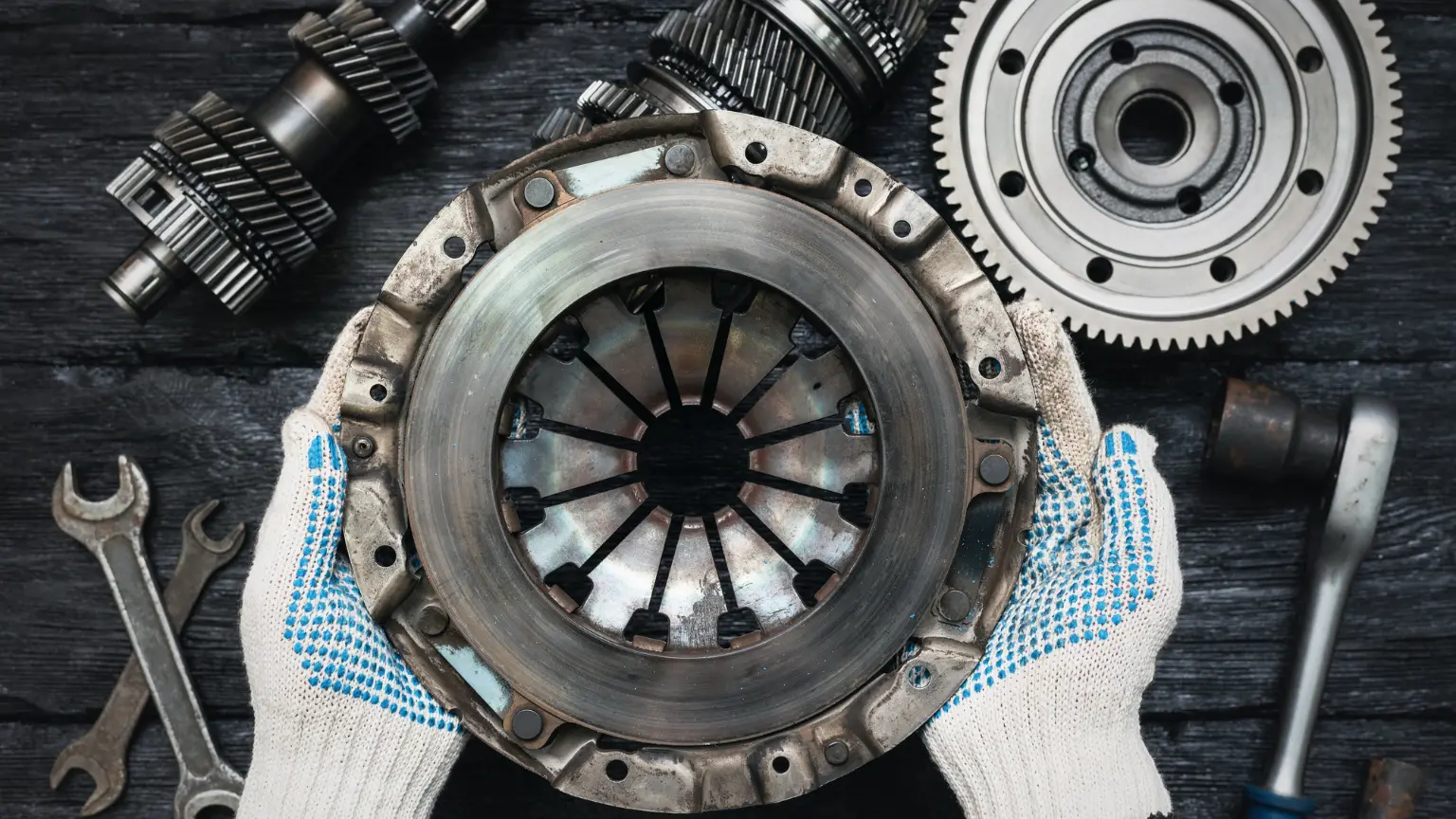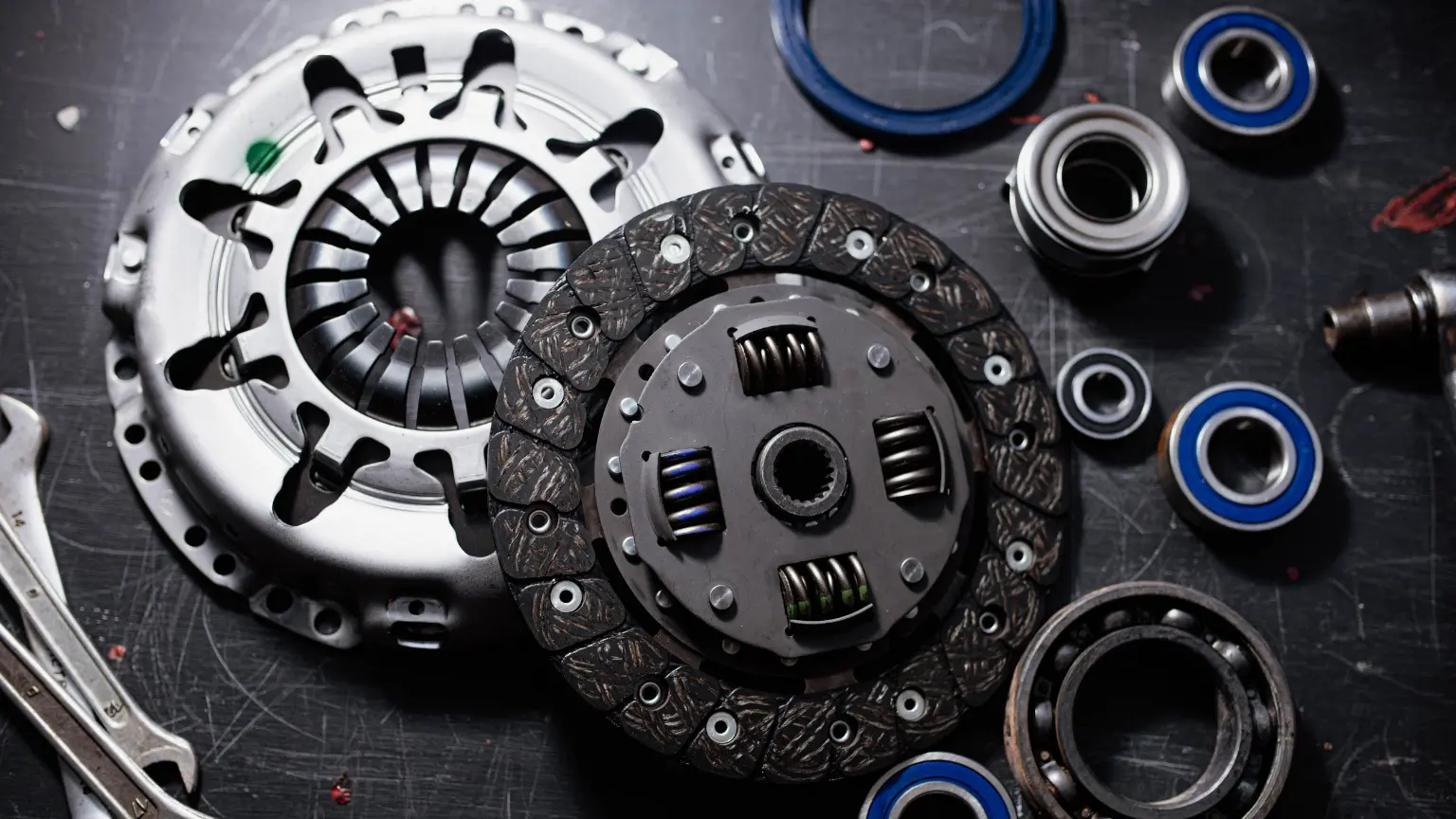Essential Maintenance Tips for Dual-Clutch Transmissions
Proper upkeep of a dual-clutch transmission—through fluid changes, tune-ups, and correct driving techniques—ensures fast gear shifts, prevents overheating, and extends transmission life.

A dual-clutch transmission (DCT) is renowned for its ability to deliver rapid gear changes and enhanced fuel efficiency. However, maintaining its performance requires regular upkeep. One of the main reasons for this is the complex structure of the DCT, which features two clutches that operate independently. Neglecting regular transmission maintenance can lead to issues such as overheating, delayed shifting, or even complete failure. Proper care not only extends the life of the transmission but also ensures smooth and efficient driving experiences. Routine maintenance prevents minor problems from escalating into costly repairs.
Importance of Transmission Fluid Changes
The recommended intervals and considerations for changing the dual-clutch transmission fluid.
Role of High-Performance Fluids
These specialized fluids are designed to reduce friction and wear between the moving parts, which is crucial in a system that relies on the precision engagement of clutches. Using the right transmission fluid not only enhances the responsiveness of the gearbox but also contributes to fuel efficiency. It’s important to consult your vehicle’s manual or a transmission mechanic to ensure you're using the fluid best suited for your specific DCT model, as using the incorrect type can lead to increased friction and potential damage.
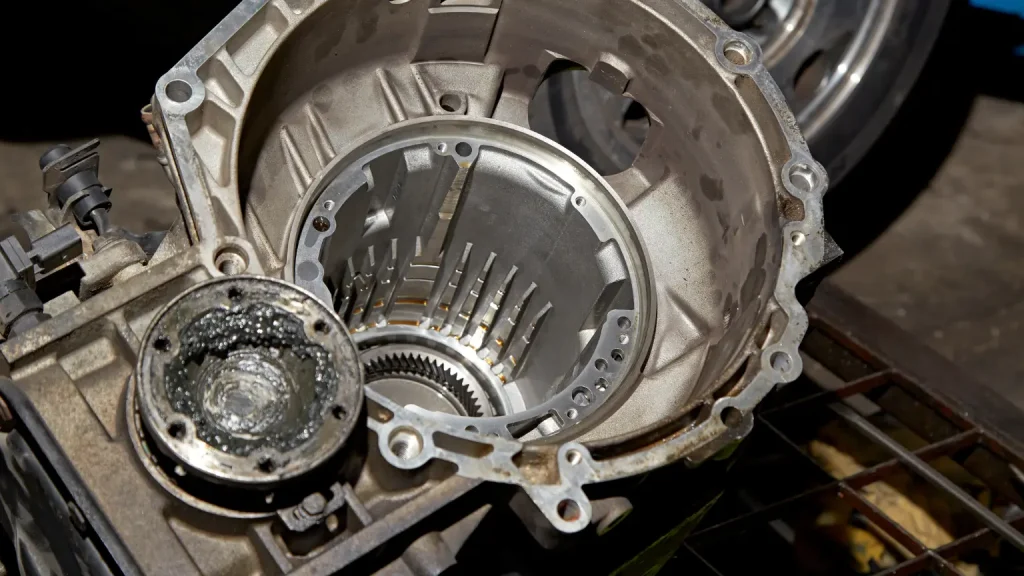
How Often to Change Transmission Fluid
The frequency of a transmission fluid change can vary based on the make and model of your vehicle. Typically, it is recommended to replace the fluid every 30,000 to 60,000 miles to ensure optimal performance. However, for vehicles frequently used in heavy-duty conditions, such as towing or operating in high-temperature climates, more frequent changes may be necessary. Maintenance checks can help identify when a fluid change is due, preventing the buildup of contaminants that can lead to issues with dual-clutch transmissions.
Preventing Overheating
Maintaining the right level and quality of transmission fluid is key to preventing wear on a dual-clutch transmission and avoiding overheating. Overheated fluid loses its ability to effectively lubricate and cool the transmission, increasing the risk of premature wear and failure. Regularly checking the fluid’s level and condition should be a part of your routine transmission maintenance. Signs that the fluid is overheating include a burnt smell or dark color. These are indicators that your vehicle may require a mechanic transmission repair sooner than expected.
Low or Degraded Transmission Fluid
Signs such as gear slippage, slow gear engagement, or unexpected surges in power can signal that the transmission fluid is either low or has lost its effectiveness. Other signs include a grinding noise during gear changes, which suggests that the protective film provided by the fluid is no longer adequate.
Routine Transmission Tune-Ups and Gearbox Oil Changes
Why Transmission Tune-Ups Are Essential
These tune-ups involve adjusting the transmission settings, updating the software, and checking the overall health of the system. This preventive care can significantly reduce the risk of transmission failures and enhance your vehicle’s performance. Tune-ups ensure that your DCT adapts well to wear and operational demands, keeping your vehicle running efficiently.
Recommended Intervals
For dual-clutch transmissions, maintaining the right schedule for gearbox oil changes is crucial for long-term functionality and efficiency. The interval for changing the gearbox oil can vary depending on several factors, including the type of vehicle, driving conditions, and the manufacturer's recommendations. Here’s a look at how often you should consider changing your gearbox oil:
- Standard Interval: Under typical driving conditions, most vehicle manufacturers advocate for a gearbox oil change every 40,000 to 60,000 miles. This interval is designed for average commuters who use their vehicles for routine travel over relatively clean and flat terrains. Adhering to this standard helps ensure optimal transmission function and longevity, preventing the build-up of harmful contaminants that can degrade essential components.
- High-Performance Vehicles: Vehicles engaged in high-performance or competitive driving environments, such as racing or off-road activities, require more frequent gearbox maintenance. For these vehicles, it is advisable to change the gearbox oil approximately every 30,000 miles. This more stringent schedule accommodates the increased mechanical stress and higher temperatures experienced, which accelerate oil breakdown and contamination.
- Severe Conditions: Driving in severe conditions demands even shorter intervals between gearbox oil changes. If you navigate through extreme temperatures, dusty or unpaved roads, or endure frequent stop-and-go traffic, consider changing your gearbox oil every 25,000 miles. These conditions place additional stress on the transmission system, leading to faster degradation of the gearbox oil.
- Manufacturer’s Guidelines: Above all, it's essential to consult your vehicle’s owner manual for the most accurate and tailored advice regarding gearbox oil changes. Manufacturers often provide specific recommendations based on the design and requirements of your particular model and make, which might differ from general guidelines.
Keeping the correct interval for gearbox oil changes is imperative for the health of your vehicle's transmission. By understanding the specific needs of your vehicle and adjusting maintenance schedules according to your driving conditions, you can ensure that your transmission runs smoothly for miles to come.
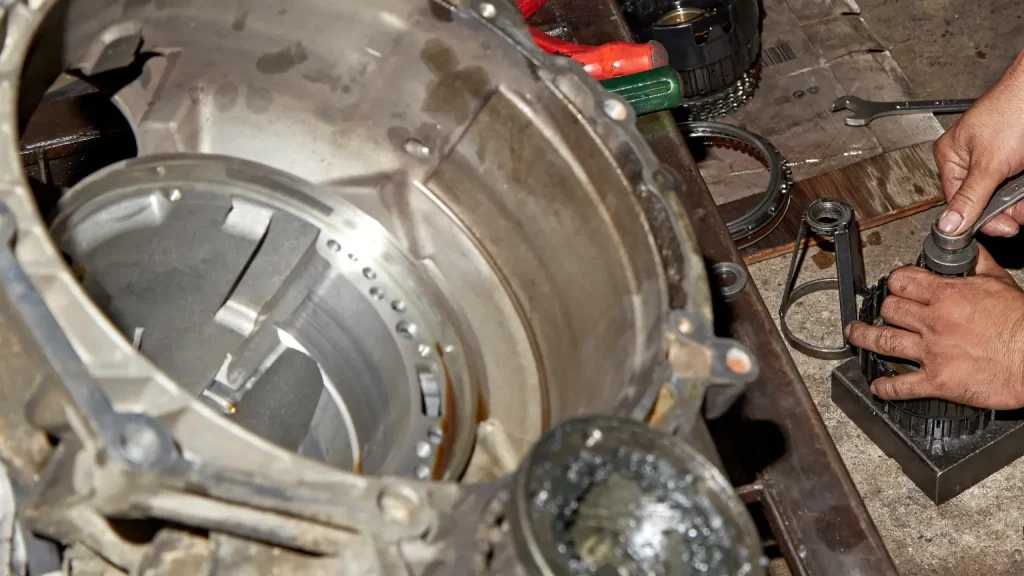
Optimal Gear Usage
Selecting the appropriate gear is vital for the longevity and smooth operation of dual-clutch transmissions. Making reasonable use of the neutral (N) gear, such as shifting to N during prolonged stops, reduces unnecessary clutch engagement and prevents excessive wear. Additionally, it’s essential to avoid sudden or abrupt gear shifts, especially when transitioning between drive, reverse, and park. Shifting only when the vehicle is fully stopped helps prevent mechanical shock and minimizes stress on internal components. In practicing thoughtful gear selection and avoiding rushed transitions, drivers can significantly extend the lifespan and reliability of their dual-clutch transmission.
Preventing Clutch Wear and Transmission Overheating
Managing Heavy Loads
Excessive load can lead to overheating, as the transmission must exert more effort to move the weight, leading to increased friction and higher temperatures. To avoid this, it’s advisable to check your vehicle’s maximum towing capacity and ensure you do not exceed it. Regular checks and balances, such as ensuring your vehicle is not overloaded and that the transmission fluid levels are adequate, will help maintain optimal transmission health under heavy-duty use.
Driving Habits That Enhance Dual-Clutch Transmission Longevity
Adopting mindful driving habits can significantly impact the durability and performance of a dual-clutch transmission (DCT). For instance, avoiding prolonged low-speed driving, such as creeping in heavy traffic, helps reduce excessive clutch wear, since the clutches often remain partially engaged in these conditions, leading to increased friction and heat buildup. Instead, minimizing stop-and-go movements or switching to manual mode when possible can help the transmission operate more efficiently. Practicing gentle acceleration rather than abrupt throttle inputs allows the DCT’s computer to select and engage gears smoothly, reducing unnecessary gear changes and mechanical shock. This not only preserves the integrity of clutch plates but also prevents overheating, which is a common cause of premature wear. By incorporating these habits into daily driving, owners can extend the lifespan of their DCT and maintain its optimal performance, ensuring smoother shifts and reliable operation over time.
Using Correct Driving Techniques to Minimize Strain
The way you drive has a direct impact on the strain exerted on your vehicle's transmission, influencing its performance. Proper driving techniques help mitigate unnecessary stress, promoting smoother operation and reducing the risk of premature wear. Implementing the strategies below will not only extend the life of your DCT but also enhance its efficiency and reliability in delivering power from the engine to the drivetrain:
- Gradual Acceleration: One key technique to minimize strain on your DCT is to avoid sudden accelerations. By gradually increasing your speed, you allow the transmission to engage more smoothly. This practice reduces the mechanical shock and wear on the clutch components, preserving the integrity of the transmission system. Smooth acceleration is particularly crucial in urban driving, where stop-and-go traffic is common, to avoid jerky movements and ensure consistent performance.
- Use of Appropriate Gears: Always selecting the appropriate gear for your current speed and driving conditions is essential. This prevents the DCT from exerting excess effort and undergoing unnecessary stress, reducing the likelihood of premature wear. When the correct gear is engaged, the transmission operates efficiently, optimizing fuel consumption and enhancing vehicle responsiveness.
- Avoid Riding the Clutch: In manual mode, it's important to avoid keeping the clutch in a half-engaged position for prolonged periods. Doing so can lead to increased wear and tear on the clutch plates, potentially leading to costly repairs or replacements. Ensure you fully engage and disengage the clutch when shifting to maintain optimal transmission health.
- Regular Stops: For those who undertake long drives, incorporating regular breaks into your journey can significantly benefit your DCT. These stops allow the transmission system to cool down and reduce the risk of overheating, which is critical for maintaining the system’s operational integrity over time.
- Smooth Braking: When it comes to reducing transmission strain, how you stop is just as important as how you start. Applying the brakes gently avoids abrupt stops that force the transmission to downshift rapidly, putting additional strain on the system. Smooth braking contributes to the longevity of the transmission by ensuring that gear changes are as seamless as possible under deceleration.
Adopting correct driving techniques is essential for anyone looking to prolong the life of their dual-clutch transmission. These practices not only minimize wear and tear but also contribute to a more enjoyable driving experience. By being mindful of how you accelerate, shift, and brake, you can significantly improve the performance and durability of your DCT, ensuring it operates flawlessly for many miles.
Early Warning Signs
Symptoms like jerky movements during low-speed maneuvers, unusual noises when the clutch engages, or a noticeable delay in gear shifting can all indicate that the clutches are beginning to wear out. If these signs are observed, it is crucial to schedule an auto transmission service promptly to address the problem before it leads to more severe transmission damage.
Dashboard Warning Lights
Common alerts include the transmission temperature light, which signals that the transmission may be overheating, or the check engine light, which can activate for various transmission-related reasons. If any of these lights illuminate, it’s important to perform a diagnostic check or visit a transmission maintenance service as soon as possible. Ignoring these warnings can lead to severe damage and costly repairs.
Benefits of Professional Transmission Mechanics
Diagnosing Dual-Clutch Transmission Issues Accurately
Accurate diagnosis of dual-clutch transmission issues is critical and often requires the expertise of professional transmission mechanics. These specialists are equipped with advanced diagnostic tools that can precisely identify problems that might not be apparent to the untrained eye. For example, a mechanic can determine whether a shifting issue is due to a hydraulic problem, electronic sensor failure, or mechanical wear.
Why DIY Isn’t Enough
The complexity of these systems often makes DIY repairs inadequate and potentially risky. Without the correct tools and expertise, attempting to fix issues on your own can lead to further damage and costly mistakes. Professional transmission care ensures that repairs are done safely and effectively, utilizing the right techniques and replacement parts that won't compromise the integrity of your vehicle’s transmission.
Finding Experienced Mechanics
Locating experienced mechanics who specialize in DCT repair is essential for ensuring your vehicle receives the best care possible. Certifications such as ASE (Automotive Service Excellence) or manufacturer-specific training indicate a mechanic's expertise in handling advanced transmission technologies. Moreover, mechanics who continuously update their skills through ongoing training are more likely to be aware of the latest repair techniques and tools, enhancing their capability to manage emerging issues specific to newer DCT models.
The relationship between a car owner and their mechanic is pivotal in ensuring the optimal functioning of a DCT. This dynamic, when grounded in trust and communication, can drastically improve vehicle maintenance and performance. Here's how a robust mechanic partnership benefits car care:
- Personalized Service: A reliable mechanic doesn't just work with tools; they work with people. Tailored service is crucial, as it adjusts to the unique specifications of the car's model and aligns with the owner's driving habits. Through understanding these individual characteristics, specialists can offer accurate, pertinent guidance and adjustments, guaranteeing optimal vehicle performance in any situation.
- Customized Maintenance Schedules: Every vehicle is different, and so is every driver. A good mechanic recognizes this and will propose maintenance schedules that are not one-size-fits-all but are instead specifically designed to align with the vehicle's age, the typical driving conditions it faces, and the climate it operates in. This could mean more frequent checks in harsher climates or tailored advice for vehicles used in more demanding environments, ensuring that the DCT system is always performing optimally and preventing wear before it begins.
- Extended DCT Lifespan: The focus on specific needs rather than generic solutions can significantly prolong the life of a DCT. By addressing the particular requirements of the transmission system, such as the need for specialized lubricants or more precise clutch calibrations, mechanics can prevent the common pitfalls that lead to premature wear and costly repairs.
A mechanic who communicates openly and builds trust can transform the standard of care your vehicle receives, significantly enhancing both its performance and reliability. This partnership is not just beneficial; it's essential for any car owner who values their vehicle's condition and their peace of mind.
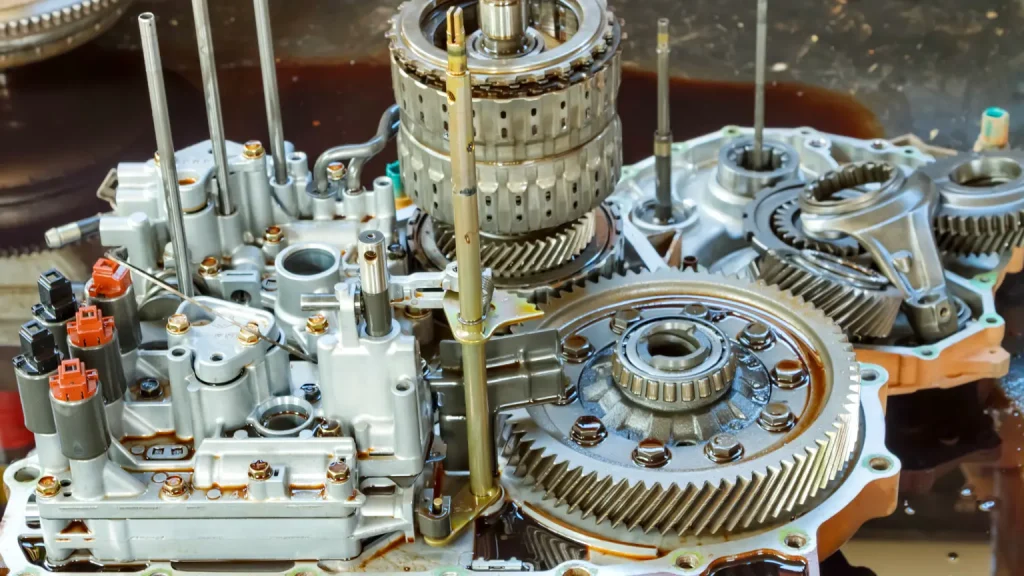
Effective maintenance of a dual-clutch transmission is not just about performing routine checks; it's about understanding the critical needs of your vehicle's specific system and adapting your driving habits to minimize wear. By changing transmission fluids at recommended intervals, using high-performance fluids, and employing correct driving techniques, you can significantly extend the life of your DCT and maintain its efficiency. Additionally, recognizing early warning signs and seeking professional help can prevent minor issues from becoming major, costly repairs. Remember, the longevity and reliability of your dual-clutch transmission largely depend on the proactive steps you take to care for it. For expert diagnostics and repair of your dual-clutch transmission, visit Trans Medic Transmissions, trusted specialists in precision transmission care and long-term vehicle performance. This approach ensures that your vehicle remains a dependable companion on the road, delivering smooth and efficient performance mile after mile.
Follow a maintenance program
Ante gravida id aenean quis egestas risus nam amet nullam leo diam diam aliquam eu eu malesuada arcu rhoncus suspendisse nulla mattis ut amet sagittis in justo egestas.

search for a trusted mechanic
Lorem ipsum dolor sit amet, consectetur adipiscing elit lobortis arcu enim urna adipiscing praesent velit viverra sit semper lorem eu cursus vel hendrerit elementum morbi curabitur etiam nibh justo, lorem aliquet donec sed sit mi dignissim at ante massa mattis.
- Neque sodales ut etiam sit amet nisl purus non tellus orci ac auctor
- Adipiscing elit ut aliquam purus sit amet viverra suspendisse potent
- Mauris commodo quis imperdiet massa tincidunt nunc pulvinar
- Excepteur sint occaecat cupidatat non proident sunt in culpa qui officia
Check the air pressure in your tires
Vitae congue eu consequat ac felis placerat vestibulum lectus mauris ultrices cursus sit amet dictum sit amet justo donec enim diam porttitor lacus luctus accumsan tortor posuere praesent tristique magna sit amet purus gravida quis blandit turpis.
Review your suspension frequently
At risus viverra adipiscing at in tellus integer feugiat nisl pretium fusce id velit ut tortor sagittis orci a scelerisque purus semper eget at lectus urna duis convallis. porta nibh venenatis cras sed felis eget neque laoreet suspendisse interdum consectetur libero id faucibus nisl donec pretium vulputate sapien nec sagittis aliquam nunc lobortis mattis aliquam faucibus purus in.
- Neque sodales ut etiam sit amet nisl purus non tellus orci ac auctor
- Adipiscing elit ut aliquam purus sit amet viverra suspendisse potent
- Mauris commodo quis imperdiet massa tincidunt nunc pulvinar
- Excepteur sint occaecat cupidatat non proident sunt in culpa qui officia
Service your vehicle as regularly as posible
At risus viverra adipiscing at in tellus integer feugiat nisl pretium fusce id velit ut tortor sagittis orci a scelerisque purus semper eget at lectus urna duis convallis. porta nibh venenatis cras sed felis eget neque laoreet suspendisse interdum consectetur libero id faucibus nisl donec pretium vulputate sapien nec sagittis aliquam nunc lobortis mattis aliquam faucibus purus in.
“Nisi quis eleifend quam adipiscing vitae aliquet bibendum enim facilisis gravida neque velit euismod in pellentesque”
Conclusion
Eget lorem dolor sed viverra ipsum nunc aliquet bibendum felis donec et odio pellentesque diam volutpat commodo sed egestas aliquam sem fringilla ut morbi tincidunt augue interdum velit euismod eu tincidunt tortor aliquam nulla facilisi aenean sed adipiscing diam donec adipiscing ut lectus arcu bibendum at varius vel pharetra nibh venenatis cras sed felis eget.

